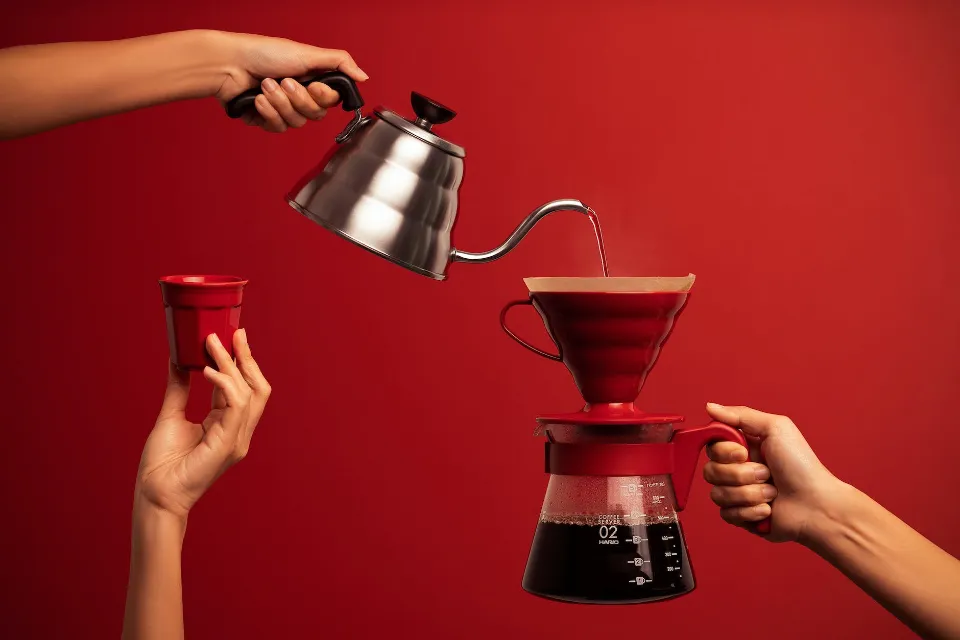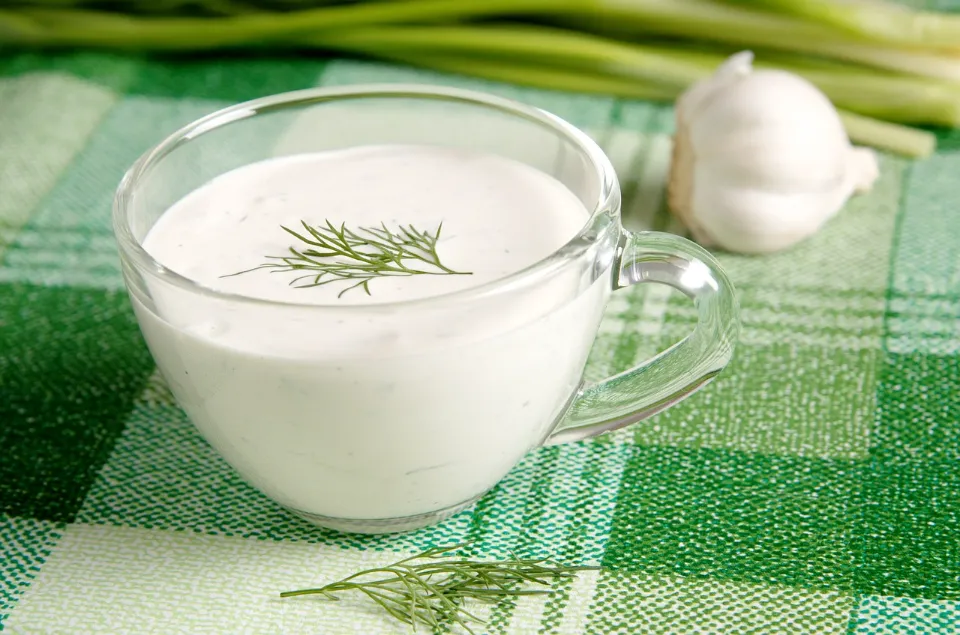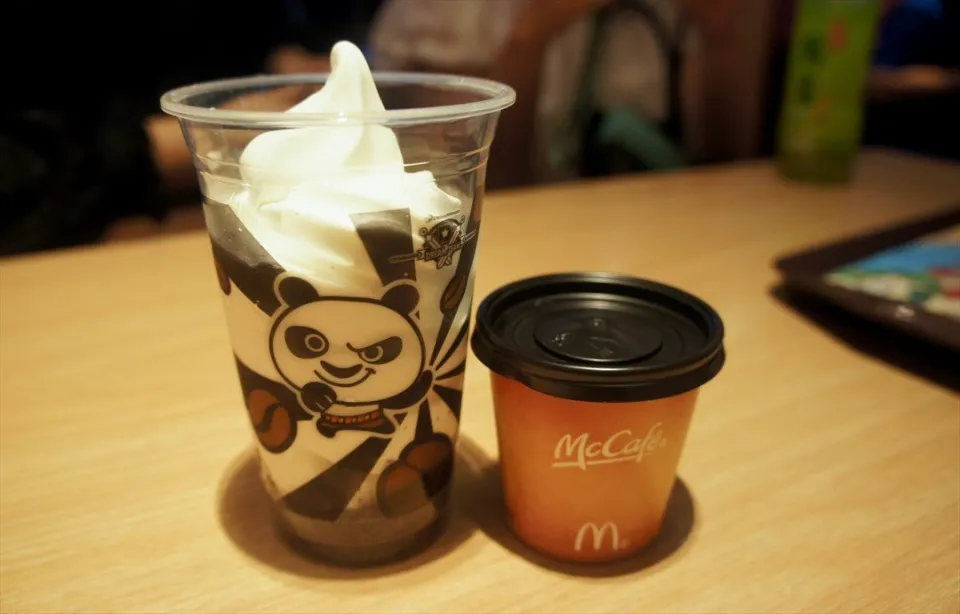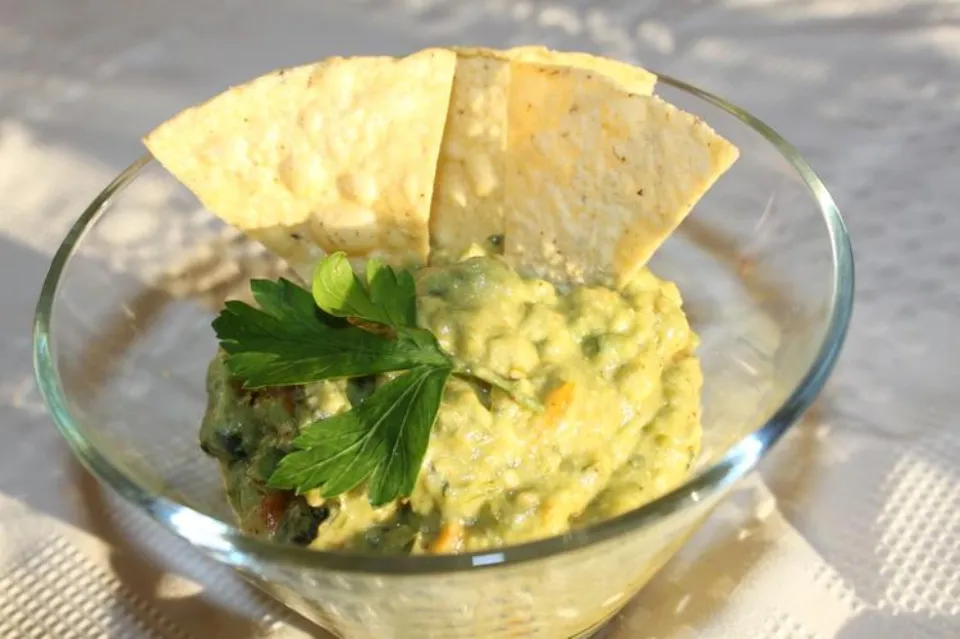You might want to start brewing coffee at home or you might already do so but are unsure of the best way to do it. Here, we’ll examine the French press and the pour-over, two straightforward but efficient ways to make coffee. The coffee you can make using these two different techniques will taste different, will yield less coffee, and will take longer to prepare. Let’s look more closely.
French Press Vs Pour Over: The Basics
The French press works in an easy way. The user places measured coffee grounds in the bottom of the French press and then adds hot water on top of them. This steeps for 4-5 minutes. A metal filter has a metal lid on it. When steeping is finished, you push the filter top downward. This forces the grounds to the bottom, leaving the flavorful, fragrant coffee on top!
The term pour-over refers to brewing a single cup of coffee using a drip method. Typically, you’ll have a pour-over funnel that is mounted directly over your cup. Along with the coffee grounds, the funnel also contains the coffee filter. Hot water is manually poured over the coffee grounds in an even stream to brew it. The quantity of grounds and water you use is dependent on how much coffee you want. Coffee drips as a result and falls directly into your cup.
What is French Press Coffee?
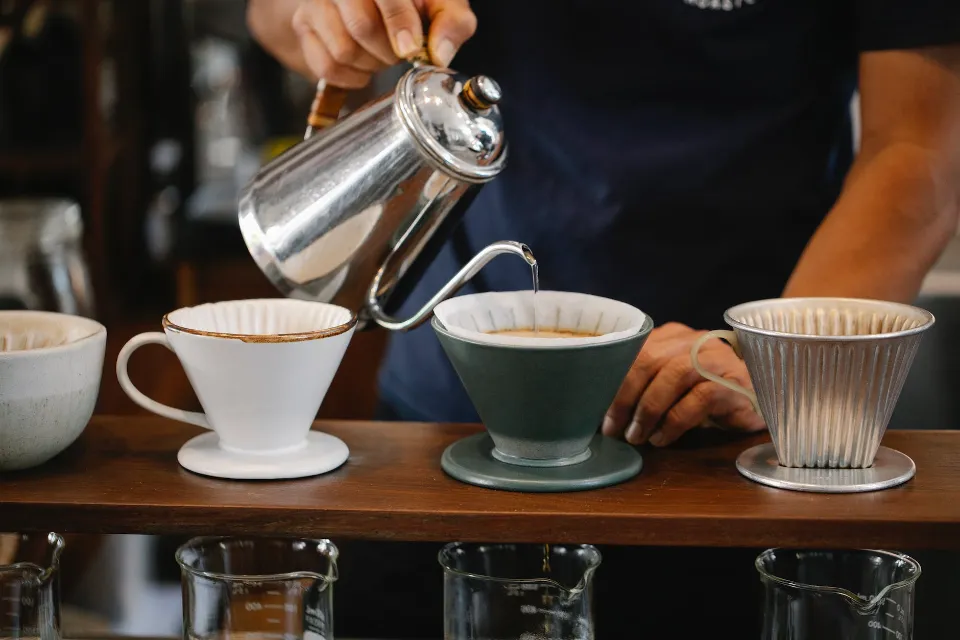
A stronger, more robust cup of coffee is produced by a French press as opposed to a pourover. This is because the press is designed to fully immerse the grounds in water and then steep and saturate for several minutes, drawing out a more concentrated flavor.
According to the Food Network, a French press is a carafe with a separate plunge-able mesh filter. As with a pourover, it is preferable to use coarse-ground coffee because fine grounds can sift through the filter or make the coffee too bitter. However, brewing is straightforward: you simply pour water that is just about to boil over the grounds, let them steep for 3–4 minutes, then push the filter down and pour.
For those who prefer strong coffee, a French press has the advantage of being simpler to make than a pourover. Compared to a pourover, it also creates a coffee with a thicker body, which can be nice. The long steep, however, means that water that is too hot or an improper grind has a bigger negative impact, according to Good Housekeeping, so French press preparation is crucial.
Additionally, it produces more sediment than pourover, which improves the texture even if you don’t like the sediment. The choice between a smoother or stronger brew, the control of the pourover or ease of the French press comes down to personal preference in the end. Both the French press and the pourover require some additional work and equipment.
French Press Pros & Cons
Pros
- Keeps natural oils
- Bulk batch of coffee
- Takes less time
Cons
- Can have grounds in coffee
What is Pourover Coffee?
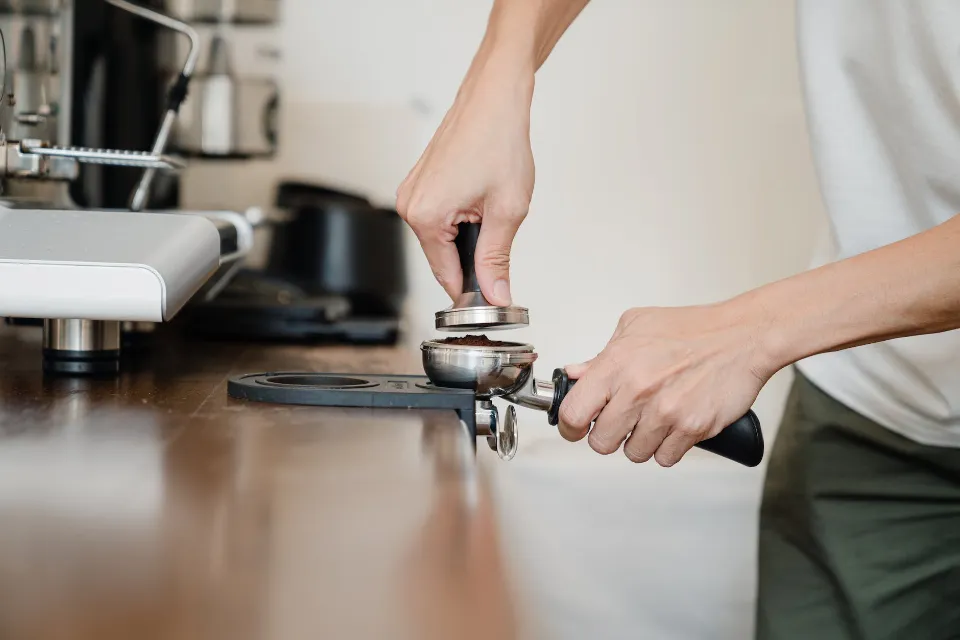
Pourover coffee is made by simply pouring hot water over ground coffee in a filter. It is exactly what it sounds like. Although this is essentially the same procedure as your drip coffee maker, pourover gives you more direct control over the outcome, as noted by Taste of Home. The essential items include a pourover dripper, preferably a Hario, a kettle, coffee filters, and ideally a digital scale for weight measurements. It’s important to pour hot water into the coffee four times in a circular motion. The first “blooms” the grounds to draw out flavor, then the next three pass through the coffee to brew the perfect cup.
Why put yourself through this? Because fresh water filters through each round, according to Serious Eats, pourovers produce smooth coffee. You are less likely to overbrew and extract the bitter, unpleasant flavors that can develop when grounds are left in hot water for an extended period of time if you do it this way. Experienced brewers can also adjust variables like brewing time to their preferences thanks to this.
The drawback is the need for accuracy: To achieve the right balance, your water should be 200 degrees Fahrenheit, and you need a medium-coarse grind on your coffee, meaning pre-ground bags may be too fine. By circling your pours, you should also evenly wet all the grounds because if you overbrew one area, it might result in bitter or sour notes.
Pour-over Pros & Cons
Pros
- Single-serve
- Filters out grounds
- Clean, clear cup
Cons
- Takes more time
- Soaks up natural oils
Differences Between Pour over and French Press

French presses extract all of the natural coffee oils, giving you a true taste of your coffee blend. With a few significant differences, pour over coffee and French press share many similarities.
Pour-over and French press have a few key distinctions that are worth noting. But in the end, which you prefer will largely depend on how easy it is to use, how much control you have, and what kind of coffee flavor you want.
Coffee Equipment – Pour over Vs French Press
The materials, options, and sizes of the equipment you’ll need to brew pour-over and French press coffee vary considerably. To be able to manage each step of the brewing process for both options, take into account using a scale, thermometer, and timer.
Pour over Coffee Makers
You’ll need four things for pour-over coffee:
- Kettle (A gooseneck kettle offers more control)
- Dripper (Cone shape, flat bottom, or one-piece)
- Filter (Paper or reusable metal filter)
- Mug or carafe
When using a pour-over coffee maker, it’s important to keep in mind that various drippers employ various filters. For instance, the Kalita Wave uses a flat-bottom filter, while the Hario V60 uses a #2 cone-shaped filter. There are also stainless steel options and one-piece drippers like the Chemex, which uses a unique filter.
French Press Coffee Makers
To make a cup of French press coffee, you’ll need the following:
- French Press coffee maker
- Kettle
- Measuring spoon
Most French press coffee makers work in a similar way. Each one has a filter, plunger, and chamber. Their compositions, storage capacities, and filter designs vary. Although stainless steel and glass are both available, glass French presses are more prevalent.
Brewing Control – Ease of Use
Both the French press and the pour-over methods have a small learning curve. Determine the ideal brew time, temperature, and ground size for your preferences. You might succeed on your first attempt, but it’s more likely that you’ll need to drink a few cups first.
Read More: 5 Best Iced Coffee Makers (2023 Reviews)
Pour over
Your pouring technique is the secret to making a good cup of pour-over coffee. Your best bet is a gooseneck kettle that’ll let you have precision control over your pour. Using the pour-over method requires a precise pour, so getting a good kettle is essential. You can also play around with brew temperature and flow rate to improve your coffee.
French Press
Using a pour-over dripper is more complicated than using a French press pot. However, with that ease of use comes less control. The water won’t be under your control in the same way that it is with a pour-over coffee maker, but you will still be able to control the steeping time, temperature, and other factors.
Coffee Quality
Pour-over and French press brews have some differences in quality, despite the fact that both make delicious cups of coffee.
The majority of pour-over drippers with paper filters make much cleaner cups of coffee. There aren’t any tiny particles in the bottom of your carafe. It’s the best way to bring out the coffee’s original flavor notes and characteristics. Because of this, java enthusiasts prefer to use a pour-over brewer to make their specialty single-origin coffee. It’s also suitable for brewing lighter roasted beans for a brighter and more vibrant flavor.
Read More: Best Coffee Beans for Cold Brew – Your Complete Guide
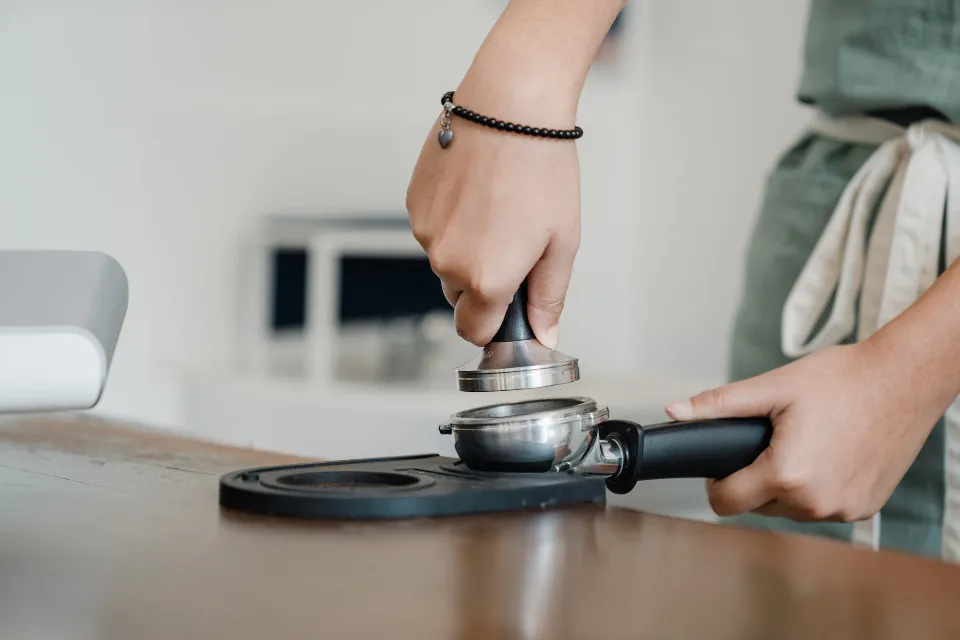
n comparison, an immersion brewing method tends to produce a full-bodied coffee with more robust flavors. Your French press brew will contain some fine particles, but those particles help to give the beverage a bolder flavor. Additionally, since there is no paper filter, the coffee’s natural oils can enter your brewed coffee, giving it a much creamier mouthfeel. Overall, it’s suitable for brewing medium to darker roasted beans. French press is the way to go if you prefer coffee with a stronger flavor. Additionally, you can also use a French press coffee maker to make cold brew coffee.
Also Read: Can You Heat Up Cold Brew Coffee – Will It Change the Flavor?
Grind Size
Depending on your method, there is a best grind size for coffee. Grind size affects how the coffee tastes, but it also determines how “muddy” your coffee ends up.
Choose medium- to coarse-grained coffee for a French press. Less coffee sediment will enter your brew as a result of the larger size. However, the coarser the grinds, the harder to extract the flavor. We usually grind the beans to slightly coarser to pour-over for brewing French press coffee.
Aim for a medium grind size with table salt-like consistency for a pour-over. Not overly coarse, but a little coarse. Since a dripper’s filter is typically more effective than a press’s filter, you don’t need to worry as much about sediment. However, if you grind it too fine, the small particles at the bottom could clog the filter and lengthen the brewing process.
Read More: 8 Best Coffee Beans for Cold Brew – Your Complete Guide
Brewing Capacity
Pour-over drippers and French presses both come in various sizes. French presses range from single-serve to 51 oz capacity, while drippers offer more flexibility. For instance, some drippers, like the V60 01, only allow you to brew one cup at a time. As an alternative, some, like the Chemex, have a 13-cup capacity option that enables you to brew a larger batch.
Budget
A pour-over dripper is your best bet if you’re on a tight budget. From $5 to over $600, drippers are available.
French press options are available starting at around twenty dollars, but, as with drippers, you can also find high-end options that cost a few hundred dollars. You will therefore have a variety of price options available regardless of the method you select.
Read More: Pour Over Coffee vs French Press – Which Method is Better?
How Much Time Do You Have?
Use a French press if you want a quick batch of hot, fresh coffee. This less labor-intensive technique typically works faster, taking 6 to 8 minutes in total: 1 minute for measuring, 4 to 5 minutes for steeping, and 5 seconds for pressing. Pour-overs use the drip method, which takes longer and requires you to regularly pour in hot water. A pour-over can brew a cup of coffee in as little as 8 minutes or as long as 15.
Taste Differences
French presses bring out all the natural oils in coffee, which will give you a true taste of your coffee blend. The 4-5 minute steeping process allows for more of the coffee’s natural oils to release, which in turn builds more flavor.
Pour-overs have the opposite effect. There is no steeping involved in the drip method of brewing coffee. This reduces the amount of rich, full flavors and restricts the amount of oils that are released. The use of paper filters is an additional factor. Paper filters often soak up the coffee’s oils, giving you a weaker flavor profile. Pour-over coffee is still full of flavor, but the cup is cleaner and has less oil and mouthfeel.
How Much Coffee Do You Want?
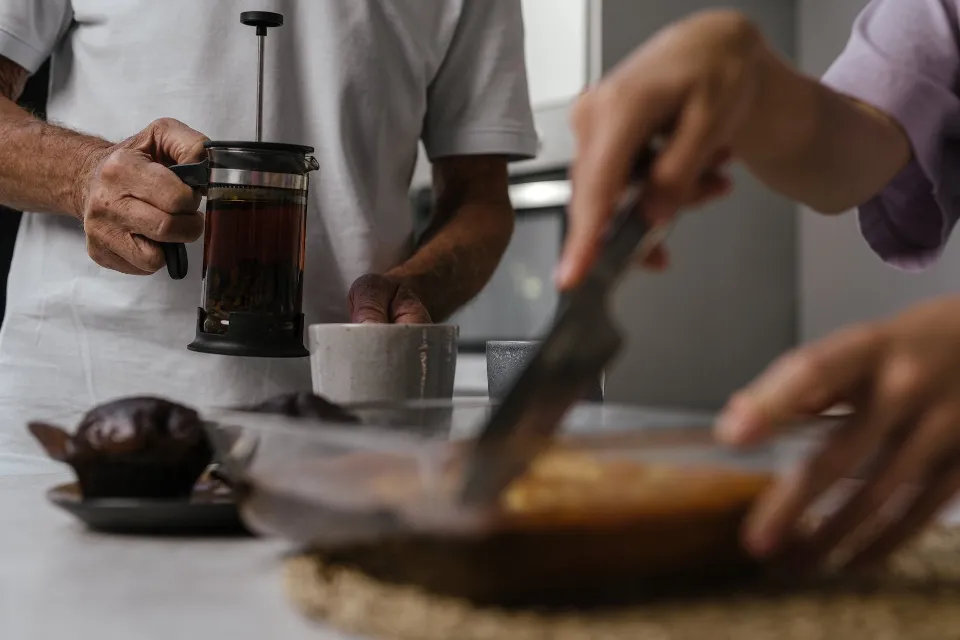
A typical French press holds 48 ounces and can serve six people one 8-ounce cup of coffee. Additionally, French presses have the capacity to make just one or two cups of coffee. This is so that you can alter the ratios of coffee grounds to water. A pour-over, on the other hand, is best for hand-brewing one cup of coffee. Although different amounts of coffee and water can be used in pour-overs, making coffee for a large group will take a lot of time.
Which is the Better Method?
It’s difficult to pick a winner between these two brewing techniques because they both yield delicious cups of coffee. You step in to help with that. Try a French press if you’re brewing coffee for a large group or prefer a thick, creamy mouthfeel in your coffee. Bring out the pour-over if you only need one or two cups of coffee and prefer your coffee to be clear and crisp. Enjoy your morning coffee in either case.
The Verdict
You can make a great cup of coffee using either the French press or the pour-over method. Pour-over coffee, on the other hand, is the way to go if you want one that gives you a strong caffeine boost and is less likely to leave sediment in your cup.

